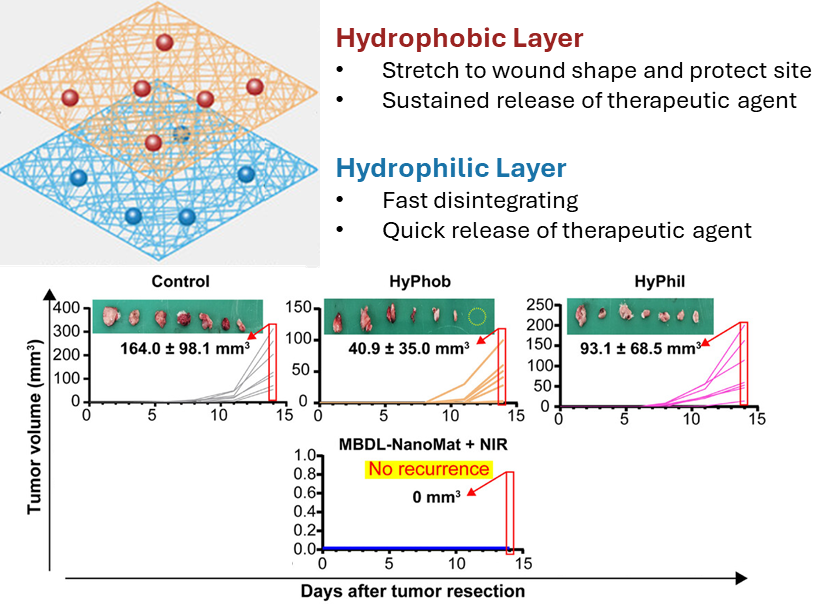
Dual-Layered Nanofibrous Matrix designed for rapid-release and sustained-release of various therapeutics, leading to no tumor recurrence in triple negative breast cancer 4T1 tumor-resected mouse models.
Invention Summary:
Triple-negative breast cancer (TNBC), a particularly aggressive subtype of breast cancer which comprises 15-20% of all breast cancers, poses significant therapeutic challenges due to its poor response to conventional treatments and highly invasive nature. The primary treatment option, surgery, poses several challenges. Notably, it is difficult to achieve complete resection, leading to tumor resurgence, and difficult wound healing post-surgery leads to prolonged hospital stays and elevated healthcare costs.
Rutgers researchers, in collaboration with Kangwon National University in Korea, have designed a novel nanofibrous matrix which can be applied to the post-surgical resection wound site. The nanofibrous matrix combines a hydrophilic layer, which provides optimal adhesion to the wound site and delivers therapeutics rapidly, with a hydrophobic layer, which further protects the wound and slowly delivers therapeutic agents over the course of two weeks. Overall, the nanofibrous matrix prevents tumor resurgence in a TNBC mouse model.
Market Applications:
Advantages:
Publications:
Intellectual Property & Development Status: Provisional application filed. Patent pending. Available for licensing and/or research collaboration. For any business development and other collaborative partnerships, contact: marketingbd@research.rutgers.edu